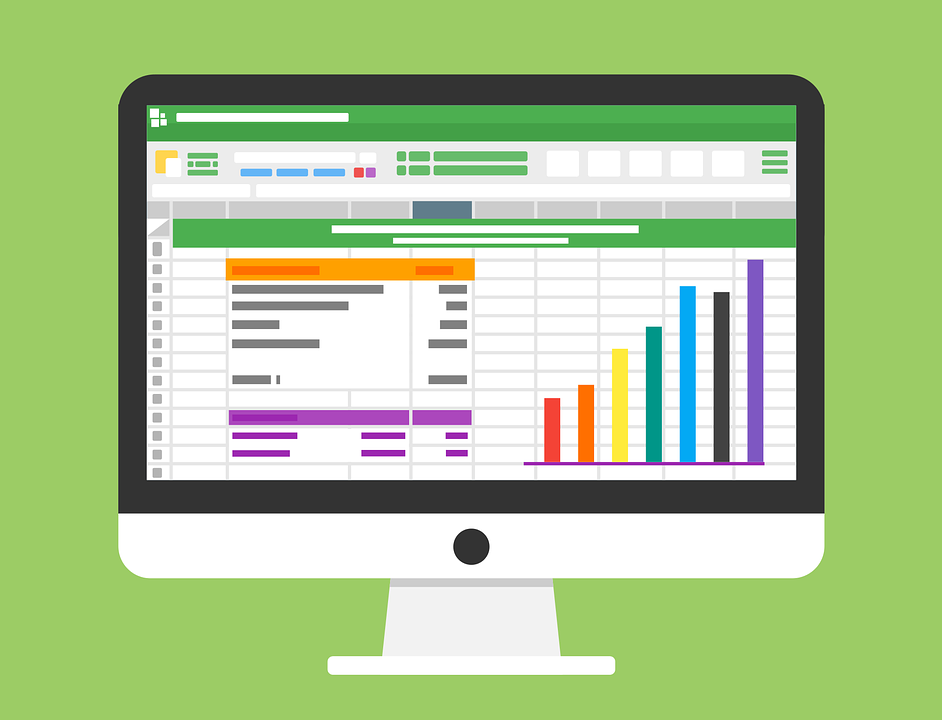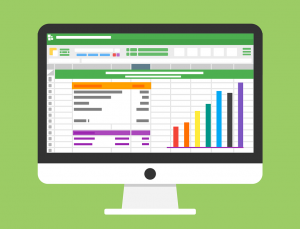
How to Record Donations Your Business Receives in Quickbooks
 Has your business received a donation? It’s not uncommon for businesses to receive donations. Even if your business isn’t classified as a nonprofit organization (NPO), it can still receive donations. Because this money isn’t generated from your business’s normal operations, however, it’s important that you record them properly in your financial records. Using Quickbooks, you can easily record donations that your business receives.
Has your business received a donation? It’s not uncommon for businesses to receive donations. Even if your business isn’t classified as a nonprofit organization (NPO), it can still receive donations. Because this money isn’t generated from your business’s normal operations, however, it’s important that you record them properly in your financial records. Using Quickbooks, you can easily record donations that your business receives.
To record a donation, log in to your Quickbooks Online account — the cloud-based version of Intuit’s accounting software — and click the gear icon at the top of the screen, followed by “Custom Form Styles.” From here, click “New style” to create a new form, followed by “Content.” Next, click the pencil icon at the top of the menu, followed by “Form names.” You can then modify the name of the form, whether it’s an invoice estimate or receipt.
It’s important to note that the aforementioned steps only apply to donations that your business receives. If your business donates money to another company or entity, you’ll need to record that transaction differently. To record donations made by your business, log in to Quickbooks and click the gear icon at the top of the screen, followed by “Chart of Accounts.” Next, click New > Category Type > Expenses > Detail Type > Charitable Contributions. You will then be asked to enter a name for the donation, such as “donation to company A.” When finished, click “Save and close” to complete the process.
You’ll also need to create a product item for this donation. This is done by clicking the gear icon, followed by “Products and Services.” Next, click “New” and choose the type of product. You can then enter a name for the donation. Most importantly, make sure the “I sell this product or service” field contains a check mark. If it doesn’t click the box next to this field so that it places a check mark inside it. In the “Income account” field, choose the “Charitable Constructions” account that you recently created. When finished, click “Save and close.”
Recording donations is essential to keeping your business’s financial records in working order. Whether you make a donation to another business or receive a donation from a customer or client, you should record those transactions in your accounting software. You can refer to this blog post for more insight on how to record donations using Quickbooks.
Did this tutorial work for you? Let us know in the comments section below!

What Are Undeposited Funds in Quickbooks?
 If you use Quickbooks Desktop to keep track of your business’s financial transactions, you may come across the term “undeposited funds” when looking through your account. Based on the name alone, it’s difficult to surmise what exactly it means. As a result, many business owners take the wrong approach with their undeposited funds. So, what are undeposited funds in Quickbooks?
If you use Quickbooks Desktop to keep track of your business’s financial transactions, you may come across the term “undeposited funds” when looking through your account. Based on the name alone, it’s difficult to surmise what exactly it means. As a result, many business owners take the wrong approach with their undeposited funds. So, what are undeposited funds in Quickbooks?
Overview of Undeposited Funds
In Quickbooks, undeposited funds is a default asset account that’s automatically created by the Quickbooks software. It acts as a standing account in which money that your business receives is temporarily stored until you deposit them into your desired bank account.
Whenever you receive a payment in Quickbooks, the software will place that money in a “Deposit To” account. And while you can specify your own “Deposit To” account for this purpose, Quickbooks uses undeposited funds as the default “Deposit To” account. All money that your business receives is transferred, by default, to the undeposited funds account. And it remains here until you deposit it in another account.
Tips on Using Undeposited Funds in Quickbooks
There are a few things to keep in mind when using undeposited funds in Quickbooks. First, Quickbooks Desktop allows you to deposit entire groups of payments. If a customer paid you multiple times (e.g. he or she made three or four purchases), for example, you can deposit all his or her funds into your bank account using the group function.
You’ll also find your bank account register doesn’t display the customer’s name when using undeposited funds. This is because Quickbooks doesn’t look at the customer’s name because some deposits contain multiple payments from the same customer.
You can also change the default “Deposit To” account in which your business’s received payments are stored. This is done by logging in to Quickbooks Desktop and choosing Edit > Preferences > Payments > Company Preferences. From here, click the box labeled “Use Undeposited Funds as a default deposit to account” so that it longer contains a check mark. Once the check mark has been removed, click “OK” to save your changes and complete the process.
To remove deposited funds from undeposited funds, log in to your Quickbooks account and access Banking > Make Deposits > Payments and Deposits > select the payment > OK. Next, enter the negative total dollar amount in the field labeled “Amount,” and enter zero for “Deposit subtotal.”
Have anything else you’d like to add? Let us know in the comments section below!

How to Edit a Journal Entry in Quickbooks
 Creating journal entries is an important step to using the Quickbooks software. When you create a journal entry, you are essentially creating a memo for accounting purposes. You can use journal entries to easily record transactions so that aren’t accidentally overlooked by your business. But if you’re thinking about using in your accounting practices, you’ll need to follow a few basic steps. In this post, we’re going to break down the steps to using journal entries in Quickbooks, revealing where this feature is located as well as how to edit an existing journal entry.
Creating journal entries is an important step to using the Quickbooks software. When you create a journal entry, you are essentially creating a memo for accounting purposes. You can use journal entries to easily record transactions so that aren’t accidentally overlooked by your business. But if you’re thinking about using in your accounting practices, you’ll need to follow a few basic steps. In this post, we’re going to break down the steps to using journal entries in Quickbooks, revealing where this feature is located as well as how to edit an existing journal entry.
To create a journal entry in Quickbooks Online — the cloud-based version of Intuit’s popular accounting software — log in to the software and click the magnifying glass icon at the top of the screen. Next, click “Advanced Search” under the field titled “Search Transactions.” As the name suggests, this will allow you to perform an advanced search of your account. For this purpose, though, you should use it to search for the journal entry that you want to edit.
In the “Search” field, click the drop-down menu and choose “Journal Entries.” You will then have the option to filter certain journal entries from the results. It’s recommended that you edit the filters so that you can easily find the journal entry you want to edit. Assuming you only have a handful of journal entries, finding it shouldn’t be a problem. But if you have dozens or hundreds of journal entries, you may need to use the filter search option to narrow down the results.
After setting the filters, choose “Search,” followed by “Date Filter.” You can then select a date range for the journal entries, after which you can click “Apply.” Quickbooks will then reveal all journal entries that meet your specified criteria, including the date range. When you see the journal entry that you’d like to edit, click to edit it. After editing the journal entry, choose “Save and close” to complete the process. Sorry if you were expecting more, but that’s all it takes to edit a journal entry in Quickbooks!
It’s important to note that journal entries in accounting typically consist of records of a transaction and its respective debit or credit. While Quickbooks journal entries can also contain this information, they are used primary for creating references of financial transactions.
Did this tutorial work for you? Let us know in the comments section below!

How to Record a Credit Memo in Quickbooks
 When you give a customer credit, it’s important that you record that credit on your business’s books. Assuming you use the Quickbooks accounting software, you can easily record this exchange using a credit memo. Intuit’s popular accounting software makes recording customer credits quick and painless. For a step-by-step walkthrough on how to record credit memos in Quickbooks, keep reading.
When you give a customer credit, it’s important that you record that credit on your business’s books. Assuming you use the Quickbooks accounting software, you can easily record this exchange using a credit memo. Intuit’s popular accounting software makes recording customer credits quick and painless. For a step-by-step walkthrough on how to record credit memos in Quickbooks, keep reading.
First, log in to your Quickbooks account and click the (+) menu at the top of the page. Next, choose “Credit Memo” under the “Customers” column. From here, click the drop-down menu and find the customer to whom you want to issue the credit. Once you’ve found the customer’s name, click it to proceed. You’ll then need to choose a product or service associated with the credit. Under the column titled “Product/Service,” click the drop-down menu, after which you’ll see a list of all applicable products and services. Find the product or service associated with the credit and click it.
Next, take a look at the column titled “Amount” to ensure that it accurately reflects the amount of credit you want to give the customer. By default, this amount is set as the sale price of the respective product or service. You can change it, however, by modifying the “Amount” field on the right-hand side of the screen. If you only want to give the customer a 50% credit, for example, you can divide this total in half to calculate the appropriate credit amount. Regardless, make sure the “Amount” field reflects the actual amount of credit that you want to give the customer.
After choosing the customer and ensuring the “Amount” field is correct, you can save the changes to complete the process. Quickbooks offers one of two saving options: Save and Close or Save and Send. The former saves your work and closing the Quickbooks software, whereas the latter saves your work and sends the finished credit memo to the customer. If the customer hasn’t received the credit yet — which he or she probably hasn’t — choose “Save and Send.”
Not all businesses give customers credit. In fact, most businesses will probably never encounter a scenario in which they need to issue an credit. But if your business ever gives a customer credit — whether it’s for a return, defective product, poor service, etc. — you should record it in your Quickbooks account by following these steps.
Did this tutorial work for you? Let us know in the comments section below!

Tips for Creating a Portable File in Quickbooks
 It’s not uncommon for business owners to create backups of their Quickbooks data in a portable file format. Normally, company files are used for storing and saving information. Portable files, however, are different in the sense that they only include essential information. Unlike company files, portable files contain contain letters, images, templates and logos. Therefore, they are smaller and more compact than company files, hence the name “portable file.”
It’s not uncommon for business owners to create backups of their Quickbooks data in a portable file format. Normally, company files are used for storing and saving information. Portable files, however, are different in the sense that they only include essential information. Unlike company files, portable files contain contain letters, images, templates and logos. Therefore, they are smaller and more compact than company files, hence the name “portable file.”
Only Use if Company File Is Too Large
You really don’t need to use a portable file unless your company file is too large. Assuming you run a small business and process only a few dozen transactions per week, a company file should suffice for your Quickbooks accounting needs. On the other hand, if your business is large and processes hundreds or thousands of transactions per week, creating a portable company file might be recommended. You can use a portable file to quickly share data with colleagues via email or instant messenger.
Make Sure Quickbooks Is Up to Date
It’s always a good idea to check and make sure your Quickbooks software is up to date before restoring a company file. Quickbooks supports two options for updates :automatic or manual. With automatic updates, the software will automatically update whenever a new version is released. With manual updates, you must manually log in to Quickbooks to update the software whenever a new version is released. The former is recommended since it simplifies and automates the otherwise tedious process of checking for new releases.
Create Portable Files
You can easily create portable files in Quickbooks by logging in to your account and clicking the “File” button, followed by “Create Copy.” Next, click “Portable company file,” followed by “Next.” You can then choose the location where you’d like to save the portable file, such as your computer’s hard drive, a USB flash drive, the cloud, etc. Once you’ve selected a save-to location, click “Save” and then “OK.”
Copy to Desktop If You Can’t Restore
If you’re unable to restore a portable file, try copying and saving it to your desktop first. This is done by accessing the portable file in its original location and right-clicking, followed by selecting “Copy.” Next, right-click and choose “Paste” on your desktop to save it here. You can then reattempt to open the portable file from Quickbooks.
Did this tutorial work for you? Let us know in the comments section below!

Creating Sales Receipts in Quickbooks: What You Should Know
 Creating sales receipts is an important step in running a business. When a customer buys a product or service from your business, you must provide him or her with a sales receipt. This shows the customer the amount of money he or she paid as well as their method of payment (e.g. cash or credit card). While there are dozens of tools available that can help you create receipts for your business, one of the most effective is Quickbooks. Intuit’s popular accounting software allows you to quickly and easily create sales receipts. So, if you’re looking to create sales receipts for your business, consider using Quickbooks.
Creating sales receipts is an important step in running a business. When a customer buys a product or service from your business, you must provide him or her with a sales receipt. This shows the customer the amount of money he or she paid as well as their method of payment (e.g. cash or credit card). While there are dozens of tools available that can help you create receipts for your business, one of the most effective is Quickbooks. Intuit’s popular accounting software allows you to quickly and easily create sales receipts. So, if you’re looking to create sales receipts for your business, consider using Quickbooks.
To create sales receipts in Quickbooks, fire up the program and click the (+) menu at the top of the screen. From here, select “Customers” and “Sales Receipt.” You will then a see a new screen with details about the sales receipt. This is where you’ll need to choose the customer who’s paying for the goods or services sold by your business. Assuming you’ve recorded transactions from this customer in the past, you can select his or her from the drop-down menu in the upper-left corner. If you haven’t recorded transactions from the customer, however, you’ll need to add him or her as a new customer. This is done by clicking the “Add new” button below the drop-down menu, after which you can enter the customer’s name or use an identification name.
After selecting the customer, you’ll need to enter the goods or services purchased by the customer. If it’s a new product or service, type it into the field and click “Add new.” Next, complete the requested information about the product or service, such as the sale price and date.
There are a few other steps to creating sales receipts. For instance, you’ll need to create an income account by choosing Product or Service Information > Income Account. Keep in mind that this isn’t a bank or financial account. Rather, it’s simply an account used for storing your business’s transactions.
Once you’ve created an income account, you’ll need to enter the customer’s payment method. Available options include check, cash, Discover, Mastercard, Visa, etc. Next, choose the bank account in which you deposited the customer’s payment in the “Deposit To” field. Finally, you can print the sales receipt by clicking Customers > Sales Receipt > Print or Preview.
Did this tutorial work for you? Let us know in the comments section below!

What’s the Difference Between Credit Memo, Delayed Credit and Customer Refund?
 When keeping track of your business’s finances using Quickbooks, you’ll probably come across the terms “credit memo,” “delayed credit” and “customer refund.” Based on the name alone, you may assume that they all refer to the process of refunding a customer. If a customer overpaid or returned his or her purchased item, for example, you might use these options to refund the customer. Although they all have a similar purpose, however, they are each designed for a specific function. To learn more about the differences between credit memo, delayed credit and customer refund in Quickbooks, keep reading.
When keeping track of your business’s finances using Quickbooks, you’ll probably come across the terms “credit memo,” “delayed credit” and “customer refund.” Based on the name alone, you may assume that they all refer to the process of refunding a customer. If a customer overpaid or returned his or her purchased item, for example, you might use these options to refund the customer. Although they all have a similar purpose, however, they are each designed for a specific function. To learn more about the differences between credit memo, delayed credit and customer refund in Quickbooks, keep reading.
Credit Memo
In Quickbooks, a credit memo is a transaction that you can apply to a customer’s invoice as a payment. When a customer makes a payment, you can create a credit memo for the respective invoice showing that he or she paid it.
Delayed Credit
Delayed credit, on the other hand, is a transaction you create in Quickbooks that isn’t applied to the customer’s invoice until a future date. You can add it it the customer’s invoice as a line item, specifying the date on which you want the credit to be published. So, what’s the purpose of delayed credit? Delayed credit is used when a customer pays for a product or service before the actual due date. Many businesses simply publish the credit at the time the customer makes the payment, and this usually has no ill effect on their books. Some businesses, however, prefer to wait until a specific date to publish payments made by customers for the associated fiscal period. For these businesses, using a delayed credit is recommended.
Refund
Finally, a refund is exactly what it sounds like: a transaction in which money from a customer’s payment is refunded back to the customer. It’s not uncommon for customers to request a refund after buying a product or service. If a customer received the wrong size shirt from an apparel store, for example, he or she may request a refund. Refunds are also given to customers if the purchased product or service didn’t live up to the customer’s expectations. In Quickbooks Online, you can create a refund by logging in to your account and clicking the (+) button, followed by “Refund Receipt.” From here, you can select the product or service associated with the transaction as well as the amount that you want to refund the customer.
Did this tutorial work for you? Let us know in the comments section below!

Can You Combine Reports From Multiple Company Files in Quickbooks?
 It’s not uncommon for businesses to have multiple company files for Quickbooks. This is especially true for large companies that allow several executives to control their financial books. But when you have reports from multiple company files, you might be wondering if you can combine them in Quickbooks. Thankfully, this is completely possible, though it requires a little work. For a step-by-step walkthrough on how to combine reports from multiple company files, keep reading.
It’s not uncommon for businesses to have multiple company files for Quickbooks. This is especially true for large companies that allow several executives to control their financial books. But when you have reports from multiple company files, you might be wondering if you can combine them in Quickbooks. Thankfully, this is completely possible, though it requires a little work. For a step-by-step walkthrough on how to combine reports from multiple company files, keep reading.
Assuming you use the Enterprise version of Quickbooks Desktop, you can use a built-in feature to combine multiple reports. This is done by logging in to your account and accessing the “Reports” menu, followed by “Combine Reports from Multiple Companies.” Next, select “Add Files,” at which point you can choose the location of your other company file (e.g. your computer hard drive or a USB flash drive). Once selected, click “Open” to open the company file. If you want to combine other company files, select and open them as well.
When finished, fill in the requested information for the “From” and “To” date fields. This is the range of dates from which Quickbooks will pull the reports. After choosing the date range, you’ll see a list of all reports from within those dates. You can then click each report that you’d like to combine. The final step is to select “Combine Reports in Excel,” at which point Microsoft Excel with automatically open on your computer, displaying all the reports combined into a single, convenient report. You are then free to modify or save the document.
This is just one way to combine reports from multiple company files. Another option is to combine them manually using Microsoft Excel. Although it’s a bit more work, it’s still a viable way to combine reports. To do this, open your company file and create a report for it. Next, export the report to Excel, at which point you can close the report and open a second company file. With both company files open, you can combine them to create a new, third document. Once you’ve combined the reports, you can save the new file.
Combining reports from multiple company files is a breeze thanks to Quickbooks. With Quickbooks Desktop, you can use the software’s built-in tool to combine reports. And even if you have a different version, you can still run reports and combine them manually into a new Excel document.
Have anything else you’d like to add? Let us know in the comments section below!

How to Enable Advanced Inventory in Quickbooks
 Available for Quickbooks Desktop, advanced inventory is a feature of Intuit’s popular business accounting software that offers increased control over your business’s inventory management processes. Using this feature, you can scan inventory barcodes with your smartphone, run customizable reports (valuation summary, inventory stock, etc.), track sales and orders by location, and much more.
Available for Quickbooks Desktop, advanced inventory is a feature of Intuit’s popular business accounting software that offers increased control over your business’s inventory management processes. Using this feature, you can scan inventory barcodes with your smartphone, run customizable reports (valuation summary, inventory stock, etc.), track sales and orders by location, and much more.
Unfortunately, though, many business neglect to use advanced inventory because they struggle to find this feature. Whether you’re a newcomer to Quickbooks or seasoned user, you should consider using advanced inventory. It’s one of many features that makes Quickbooks stand apart from its competitors, thereby creating a more efficient and versatile accounting system. So, how do you enable advanced inventory in Quickbooks?
To enable advanced inventory, log in to your Quickbooks Desktop account. From the home screen, click the “Edit” menu, followed by “Preferences.” You should then see a menu on the left-hand side of the page. Click “Items & Inventory,” followed by “Compact Preferences.” Next, click the empty box next to “Inventory and Purchase Orders are Active,” at which point you should see a check mark added to the box.
Assuming you’ve followed all steps thus far, you should click “Advanced Inventory Setting.” Now, you may not have the option to click this button if you haven’t purchased a license to use this feature. Advanced inventory is an addon feature that doesn’t come standard with the Quickbooks software. And if you haven’t purchased a license for it, you won’t be able to use it. But if you’ve already purchased a license, go ahead and sync your account. This is done by accessing “Help,” followed by “Manage my License” and then “Sync License Data Online.” Quickbooks will then sync your license with Intuit’s own server. Once Intuit sees that you have a license, it will allow you to click and select “Advanced Inventory Setting,” which is also known simply as advanced inventory.
To finish the process, click “Save and close.” Congratulations, you’ve just enabled advanced inventory in Quickbooks. With this feature enabled, you’ll have greater control over your business’s inventory management processes.
Keep in mind that advanced inventory is only available in Quickbooks Desktop. If you use the cloud-based version, Quickbooks Online, you won’t be able to use this feature. You can only use in Quickbooks Desktop.
Have anything else you’d like to add? Let us know in the comments section below!

How to Increase Your Business’s Cash Flow
 Cash flow is an important metric to look for when analyzing your business’s finances. Defined as the movement of money — income and expenses — it provides an accurate overview of your business’s ability to pay liabilities. If you spend significantly more money what you make, this suggests that you won’t be able to cover debt and other liabilities. You can increase your business’s cash flow, however, by doing the following.
Cash flow is an important metric to look for when analyzing your business’s finances. Defined as the movement of money — income and expenses — it provides an accurate overview of your business’s ability to pay liabilities. If you spend significantly more money what you make, this suggests that you won’t be able to cover debt and other liabilities. You can increase your business’s cash flow, however, by doing the following.
Explore Different Insurance Solutions
According to LegalZoom, insurance is the single biggest expense associated with running a business. Regardless of the type of business you operate, it probably needs insurance. Rather than choosing the first insurance company that offers you a deal, shop around and get quotes from multiple providers.
Go Digital
There are certain documents that can (and should) be stored in digital format instead of printed. U.S. businesses spend millions of dollars each year on printer paper, most of which is discarded in the trash. Before printing a document, ask yourself if you really need to print it. Perhaps you can save it on your computer to save money on stationary and increase your business’s cash flow.
Invest in Marketing
You have to think of marketing as an investment: It costs money, but like any smart investment, it can help your business make more money in the long run. A study conducted by Neilsen found that the average return on investment (ROI) for marketing was 9%. This means for every $1 you spend to promote your business, it will yield $1.09 in sales. Of course, certain marketing channels offer higher ROIs, and you can optimize your marketing campaigns so that they reach your business’s specific audience. The bottom line is that you should invest in marketing to increase your business’s cash flow.
Collect On Outstanding Invoices
Does your business have one or more customers who haven’t paid their bill? Outstanding invoices such as this are a common problem for businesses that accept post-service payments. By performing the service upfront, the business is counting on the customer to pay the bill. And if the customer doesn’t pay, the business will have to write off the bill as bad debt. To prevent this from happening, you should proactively contact customers with outstanding invoices to request payment. If a customer can’t pay the full bill, discuss a payment plan that can fit his or her budget.
11
Have anything else you’d like to add? Let us know in the comments section below!
